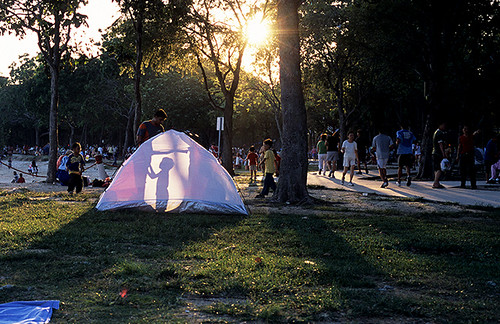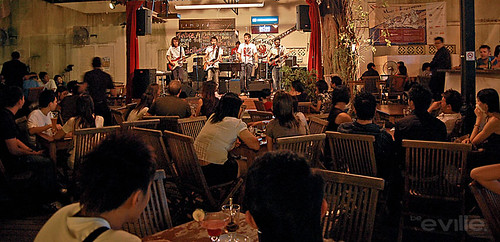

Life
In 2003, the population of Singapore seems to have a lost 61,000 people and strangely the following year 52,000 people re-appeared. It was the first time since 1960, that we saw Singapore Residents (Permanent Residences & maybe even Citizens) leaving Singapore. 2003 was the year the SARS pandemic hit Singapore. That year, saw an anomaly in Credit Card usage and payment in Singapore. People here were having difficulty paying off the Credit Card balances. Private property prices were at it all time low.
Source: singstat.gov.sg
By 2005, the population of Singapore is back to its pre-2003 level through social engineering by the Singapore Government.
By 2011, the population of Singapore is 5.18 million people on 720 km2, of whom 3.25 million (63%) are citizens while the rest are permanent residents (about 0.5 million) or foreign workers (about 0.9 million). 23% of Singaporean citizens were born outside Singapore (foreign born citizens - mainly from China, India & Malaysia), they are also known as New Citizens.
In mid-2012, the population grew by 2.5% from a year earlier to 5.31 million people. The number comprises of 3.29 million (62%) Singapore citizens and 0.53 million (10%) permanent residents, and the rest, 1.49 million (28%) were non-residents (migrant workers).
The gate is always open for people around the world who wishes to live in Singapore. There are three main categories of people to apply for Citizenship: (i) For adults who are Singapore Permanent Residents and who meet the required criteria for Singapore Citizenship (ii) For minors applying for Singapore Citizenship by descent (iii) For minors applying for Singapore Citizenship under other circumstances/Articles. The Singapore Immigration & Checkpoints Authority (ICA) website has detailed information on the criteria and required documents. Application forms are available at the ICA Homepage. All are welcomed.
Every year, 12 million transient visitors come to Singapore and most stayed for about 2 days. So on each given day, there should be around 70,000 tourist moving around in Singapore.
Lifestyle is a term to describe the way a person lives. A set of behaviors, and the senses of self and belonging which these behaviors represent, are collectively used to define a given lifestyle. The term is defined more broadly when used in politics, marketing, and publishing.

Photo Credit: Flickr.
A lifestyle is a characteristic bundle of behaviors that makes sense to both others and oneself in a given time and place, including social relations, consumption, entertainment, and dress. The behaviors and practices within lifestyles are a mixture of habits, conventional ways of doing things, and reasoned actions.

Photo Credit: Flickr.
An alternative lifestyle is a lifestyle generally perceived to be outside the cultural norm. Usually, but not always, it implies an affinity or identification within some matching subculture. Some people with alternative lifestyles mix certain elements of various subcultures. Not all minority lifestyles are held to be "alternative"; the term tends to imply newer forms of lifestyle, often based upon enlarged freedoms or a decision to substitute another approach or not enter the usual expected path in most societies. Alternative lifestyles and subcultures originated in the 1970s in urban centers.

Photo Credit: Flickr.
A subculture is a group of people with a culture which differentiates them from the larger culture to which they belong.
2015 2014 2013 2012 2011 2010 2009 2008 2007 2006 2005 2004 2003 2002 2001 2000 1999 1998 1997 1996 1995 1994 1993 1992 1991 1990 1989 1988 1987 1986 1985 1984 1983 1982 1981 1980 1979 1978 1977 1976 1975 1974 1973 1972 1971 1970 1969 1968 1967 1966 1965 1964 1963 1962 1961 1960 1959 1958 1957 1956 1955 1954 1953 1952 1951 1950 1949 1948 1947 1946 1945 1942 1940 1939 1937 1936 1935 1933 1932 1931 1930 1929 1928 1924 1923 1922 1920 1919 1913 1911 1910 1909 1906 1905 1901 All
